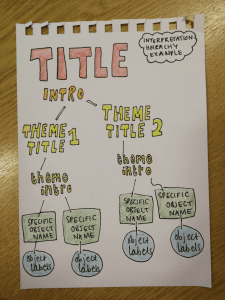Writing the exhibition interpretation
Posted on by Fay Curtis.
by Anika, Marcin and Maisie – the Young Exhibition Producers
We are the team working with Bristol Museum & Art Gallery to produce an additional exhibition to complement Leonardo da Vinci: A Life in Drawing. At this point in the project we are starting to write the exhibition interpretation.
What is interpretation?
The purpose of interpretation is to create a link between the object on display and the visitor to enhance their experience by making it relevant. This can be done in many ways. Most commonly for traditional institutions like museums is to write a 50 – 100 word label to go alongside the object.

Other ways include, but are not limited to, audio, signage, film, talks, events, and interactive displays.
Interpretation hierarchy is a way of organising the interpretation so that the exhibition can make sense if people only read the titles, but also so that the additional information is there should they wish to find out more.
As we aren’t curators we don’t have very detailed knowledge of each object so we each did some research to pick out essential information and interesting facts to share.
The biggest challenge was how to condense this information into just 100 words without losing the elements that make the object worthy of the attention of the visitors.
Conflicting feedback vs useful feedback- is conflicting feedback useful?
All the work that we create in this project must be signed off by management and the curators to make sure it’s all factually correct.
Bristol Museum & Art Gallery has many very skilled curators that look after different parts of the museum’s collection. However there were times when the views of these quite established professionals differed with how we – as young people new to the profession – believed it should be done.
This has created some conflicting opinions from museum staff but it’s actually been useful. Firstly for us, in understanding why museums present things the way they do, and the logic and reasoning behind that. For example, having interpretation panels at specific heights for accessibility reasons.
I would like to think that this has also been useful for the museum in having another insight into how things could be done differently from an outsider perspective.